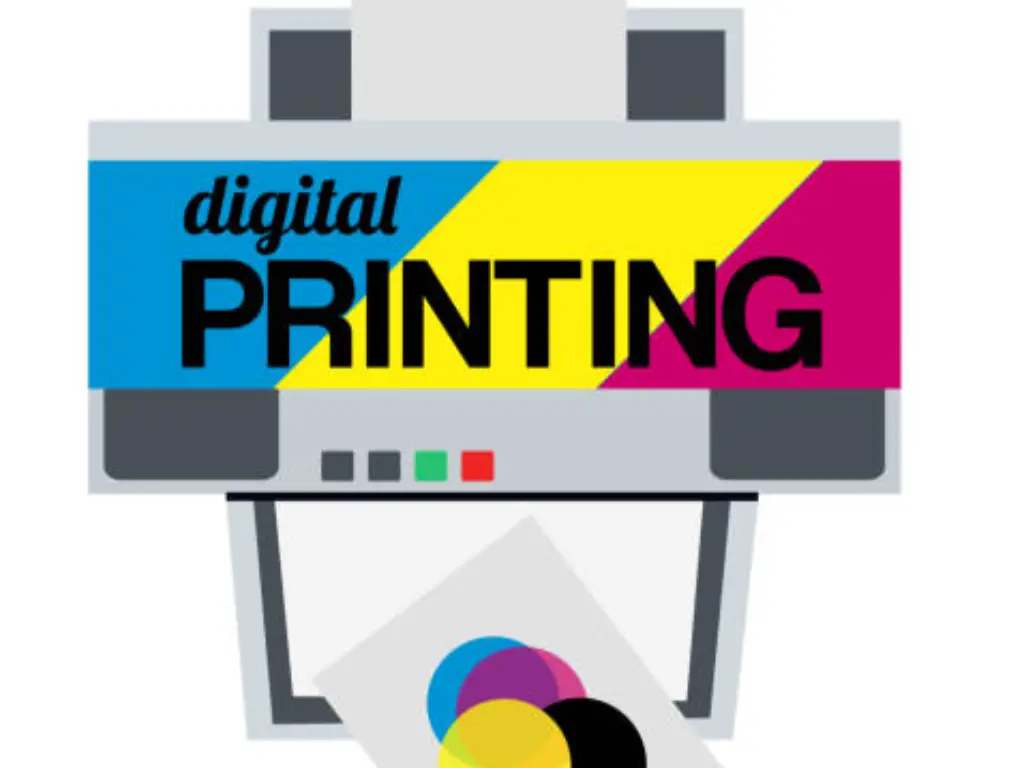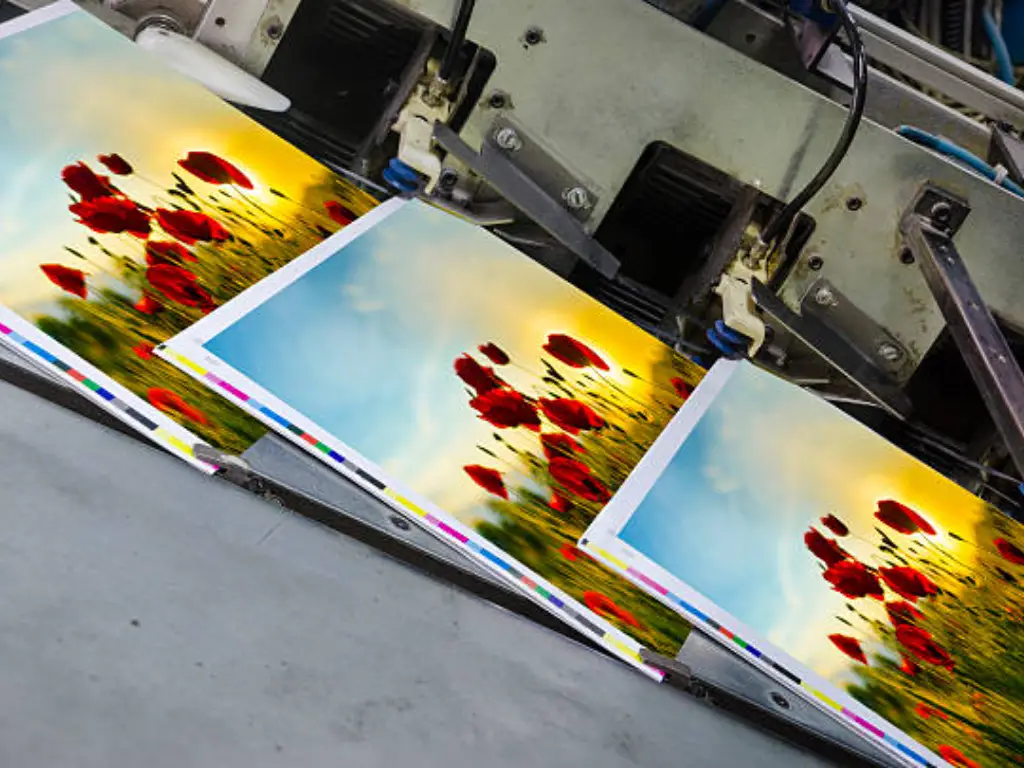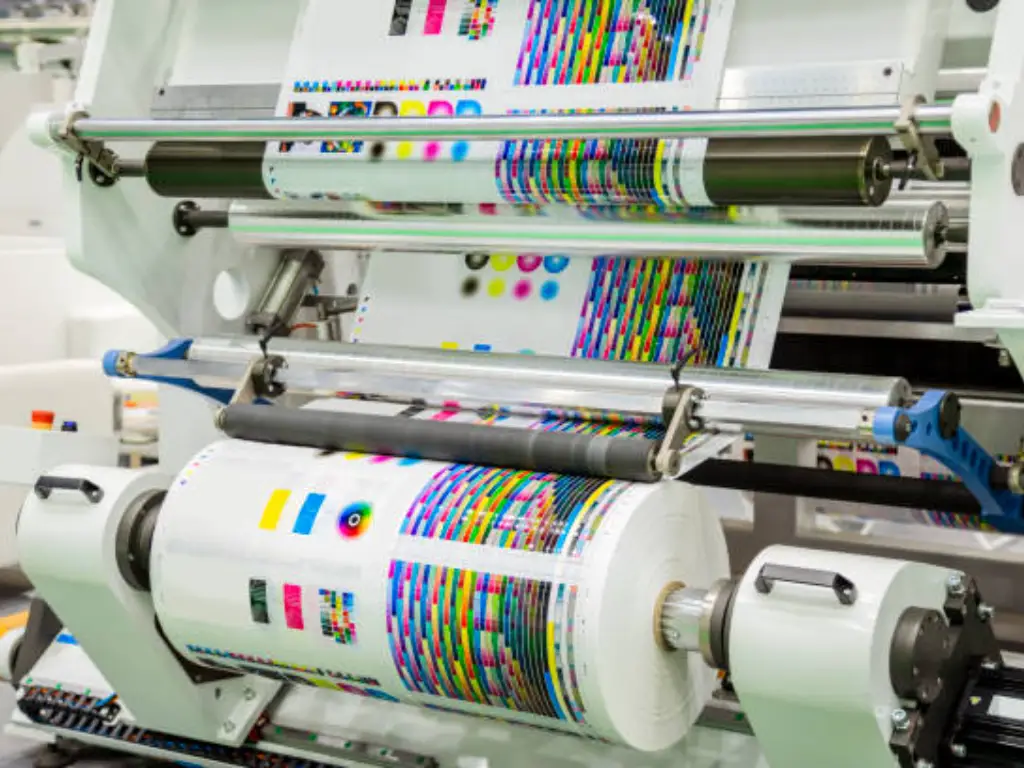Introduction
A report by market analysis firm Mordor Intelligence indicates a projected growth of the global digital printing market to more than USD 248 billion in 2029 and about USD 174 billion in 2024, with a compound annual growth rate (CAGR) of 7.4. This has been a significant upward trend over the recent years and it is not just a coincidence; it is a fundamental business fact that consumers are more likely to make a purchase when they have customized experiences with a brand and research by McKinsey and Company found that most consumers (80 percent) admit that they prefer to buy products and services of a brand that offers customized experiences.
Within a landscape where such demands are prominent, processes such as traditional offset printing and flexography, although long-established, have struggled to answer the contemporary need for agility, customisation, and efficiency. Online printing is a monumental change in an attempt to deal with these issues head-on. This transformation offers businesses the ability to react to market forces more than ever before, interact with their customers at a personal level, and streamline operational processes. The importance of digital printing can only be explained to any organization that wishes to strengthen brand presence, control its costs, and stay competitive in the market. In this article, we will take a closer look at this ground-breaking technology and its main advantages.
What Is Digital Printing?
Digital printing is basically a procedure of printing out a digital image onto diverse media, also referred to as substrates. Digital printing has no fixed printing plates, unlike other, more traditional printing methods, like offset lithography or flexography. Rather, it makes use of computer files like PDF or JPEG and forwards them to the printing press.

In this field, there are two major kinds of digital printing:
- ● Inkjet: Inkjet printing technology involves the transfer of tiny drops of liquid ink onto the substrate to create an image. Inkjet printers that are currently in use by industry are extremely advanced models, with several printheads that can jet millions of dots per second with precision that is nearly unobtrusive. This is an extremely flexible technique that can be applied to desktop files and even to banners and other large-format visuals, as well as intricate packaging labels.
- ● Electrophotography (or Laser Printing): In this process, a focused beam of a laser is used to produce a latent image in the form of an electrostatic image on a charged photoreceptor drum. The dry toner particles are then drawn into the charged sections of the drum, and the toner is then transferred and welded to the substrate by heating and pressing with pressure.
The underlying difference, that there are no plates, is the root of most of the main benefits of digital printing. It does away with much of the setup process, making it more direct, flexible, and responsive to production.
Top 10 Key Advantages of Digital Printing
Digital printing can be of great help to businesses, simplifying operations and making them more efficient. The following are the 10 major benefits that are realised by businesses when they use digital printing technology.
1. Fast Turnaround Time and On-Demand Flexibility
The greatest advantage of digital printing is that it is very fast. Digital printing can be introduced to the market almost as soon as the design is approved, unlike the time-consuming setup and preparation of traditional printing. This implies that it takes businesses a few hours or days to get their ideas to final products as opposed to weeks. This rapid pace is necessary in projects that are sensitive to time, such as marketing materials to be used in events to be held, product labels, or last-minute information. And, with digital printing, on-demand flexibility is supported, enabling you to print what you require when you require it, without relying on forecasting or holding large quantities of inventory.
2. Cost-Effective for Short and Medium Runs
Traditional printing is a kind of printing that involves high initial set-up costs in making plates. Such expenses can only be recovered in extremely high print runs. This economic model is reversed by digital printing. The first print costs as little as the last since there are virtually no setup costs. This renders it highly economical for short and medium print runs of between one and several thousand print units. The high fixed costs are not imposed on businesses creating small, targeted batches of materials.
3. High-Quality Output with Precision and Detail
One of the illusions of the early days of digital technology is that it sacrifices quality. In recent times, however, modern digital presses generate similar output to, and in certain cases even better than, the output of offset printing. Modern inkjet printheads and optimized toner recipes enable extremely high resolutions (in dots per inch or DPI), producing text as sharp and clear as possible and images that resemble real-life photography. Colour gamuts are broader than ever, and complex colour management systems guarantee that the colour reproduction remains predictable and correct from the first production to the final print. This accuracy keeps brand colors true to life and complex design features clear.

4. Variable Data Printing for Personalization
Variable Data Printing (VDP) is an exclusive attribute of digital printing that enables you to adjust things such as text, pictures, or graphics between one print piece and another. This is ideal in marketing, being personalized. An example is through a direct mail campaign, whereby the recipient is sent a personalized promotion or message that addresses their needs. This one-on-one treatment enhances interaction, improves response rates, and enhances customer loyalty.
5. Broad Material Compatibility
Although paper is still one of the main substrates, digital printing has now been made to work with a wide variety of materials. Modern presses are able to print onto many types of plastics, films, foils, textiles, vinyl, canvas, and even rigid substrates such as wood and metal. Inks of such type, including UV-curable inks, which dry immediately when subjected to ultraviolet light, are bonded to non-porous surfaces with very good permanence. This can be used across a host of applications, including flexible packaging and product labels, interior decor, vehicle wraps, and specialized industrial applications. This results in increased product design and marketing creativity for businesses.
6. Eco-Friendly and Sustainable Printing Process
Sustainability is a concept that both consumers and businesses are becoming more concerned about. Digital printing has a number of environmental advantages over the traditional process. First, it minimizes the amount of waste material since no plates are required and much paper and ink are required to set up and calibrate an offset press, which is a lengthy process. Second, digital printing is a demand-based technology, and therefore, it has less risk of obsolescence with regard to the quantity of outdated products that can be disposed of in landfills. Lastly, most digital inks are greener and water-based, and UV inks include fewer volatile organic compounds (VOCs) than traditional solvent-based inks.
7. Streamlined Workflow and Minimal Setup
The digital printing process is very simple. A Raster Image Processor (RIP) receives a print-ready digital file and converts the file into a form the printer can read. The job is then just sent to the press to be printed. It is a less complicated process that needs less manual work and less expert operator control than the multi-phase configuration of a conventional press. This not only helps to achieve quicker turnaround times but also minimizes the possibility of human error, leading to increased consistency and reliability of the end product.

8. Accurate Proofing and Repeatability
Digital printing does not show a simulation of the result on the proof, but a real printed sample of the production machine. This gives a guarantee that what you see is what you get (WYSIWYG), so the completed product will be the one that was approved on the proof. This does away with guesswork and provides their clients with total peace of mind prior to making a full commitment to a run. Additionally, all prints are produced on the same digital file; thus, repeatability is absolute, which is most important in ensuring brand integrity.
9. Compliance for Food, Toys, and Medical Labels
In any business where there is a regulation of business, material safety is an absolute must. The digital printing market has reacted by producing special low-migration inks that meet the highest international safety standards, such as food packages, medical labeling, and toys used by children. Such inks are designed to avoid the movement of substances between the printed media and the product being printed. The digital production of safe, compliant, and high-quality labels and packaging has enabled brands in these sensitive industries to access all the other advantages the technology offers, including short runs in artisanal products or variable information in traceability.
10. Seamless Integration with Modern Automation
Digital printing is the best thing as businesses continue to embrace automation. Digital presses are simple to integrate with other systems, such as Web-to-Print (W2P) portals or automated inventory management. This implies that you are able to streamline your whole process, from order to production, to enhance efficiency. Also, it is possible to integrate digital printing with automated finishing, cutting, coating, and packaging systems, which simplifies the whole process of production and makes it more efficient.
When to Choose Digital Printing Over Traditional Methods
Digital versus traditional printing is a strategic decision, depending on the parameters involved in a project. Digital printing is the better option in the following situations:
- ● Short to Medium Print Runs: Once the number is below the crossover point (frequently a few thousand units) which the more conventional approaches become more cost-effective.
- ● Projects with Tight Deadlines: This is when speed and quick turnaround are the major issues.
- ● Personalization is required: In any job that demands VDP, digital is the only possible solution.
- ● Multiple Design Variations: When the product has many SKUs (or versions or designs, e.g., craft beverages with seasonal labels), digital can easily alternate between files without spending money on new plates.
- ● Exact Proofing is Critical: When a complete, production-value proof is required before committing to the full run.
On the other hand, the least expensive solution, still, is the old-fashioned methods, such as offset or flexography, when the very large print run (tens or hundreds of thousands of identical copies) is needed and the absolute priority is the unit cost.
Application Spotlight: How Digital Printing Revolutionizes Flexible Packaging
The new world of retail is bringing its own issues to flexible packaging: a growing volume of product SKUs, the emergence of craft brands that need lower order minimums, and the ongoing demand to create seasonal or promotional packaging. These requirements exert a lot of pressure on traditional printing methods, where the cost to set up and the lead time are major limiting factors.

This is where digital printing comes in with a transformational solution. Take the case of a specialty coffee roaster that intends to roll out three seasonal holiday blends. Under traditional printing, the three designs would cost them a lot in plate charges and would have to order thousands of bags per flavor at risk of not selling them and losing a lot of money.
With digital printing, though, the roaster can switch the strategy. They will be able to order a small production run of only several hundred bags per mix, without plate charges. This allows them to experiment with how the market is reacting without having to invest heavily in the first place. Moreover, they could personally print a date on each bag of Roasted On to make the product seem fresher, which was even possible with Variable Data Printing (VDP).
The physical implications for companies following this model are radical. Traditional production methods that might take several weeks are cut down to one to two weeks. The agility enables the brands to react to the market trends almost instantly. The financial feasibility of short markets allows product experimentation and customization to create a level playing field between small and medium-sized companies and large ones. Finally, the advantage of digital printing is that it allows brands to be more creative, responsive, and economical in their packaging strategy.
Conclusion: Embracing Digital Printing for Business Growth
In conclusion, the benefits of digital printing are numerous, such as the affordability of short batches and quick production, the green nature of processes, and customization of produced items. Using digital printing as part of your business strategy will help streamline your operations, enhance the quality of the printed materials, and lead the competition. With the ongoing development of digital printing, it is evident that this technology is going to be significant in business expansion in the future. Digital printing is the intelligent, efficient decision in the current business environment, whether you are creating marketing resources, packaging, or bespoke products.
Baishen Pack: Your Strategic Partner in Flexible Packaging
Baishen Pack is a professional manufacturer and international supplier of custom flexible packaging solutions in the food, beverage, pet food, and nutritional supplement sectors with more than 10 years of experience. We bring the benefits of digital printing, on paper, to your brand. Through our use of the HP Indigo, we are responding directly to the agile demands of the current market with extremely low minimum order quantities and a speedy production turnaround of only 7-10 business days.
Our package engineers and designers offer an end-to-end service that is fully integrated and will deliver your digital proofs within 24 hours to your approval. Our product protection, freshness, and shelf appeal are secured using high-barrier products that are food grade, sustainable, and recyclable. Since the very first idea, through to raw material delivery all over the world, Baishen Pack is much more than a supplier; we are your strategic partner, and we will do whatever it takes to deliver great quality, factory-direct price, and a pace at which your brand can succeed in a competitive market.
Are you ready to make your packaging vision a reality? Today, we can offer you a free consultation and discuss with our team of experts how we can assist your product to shine through.

